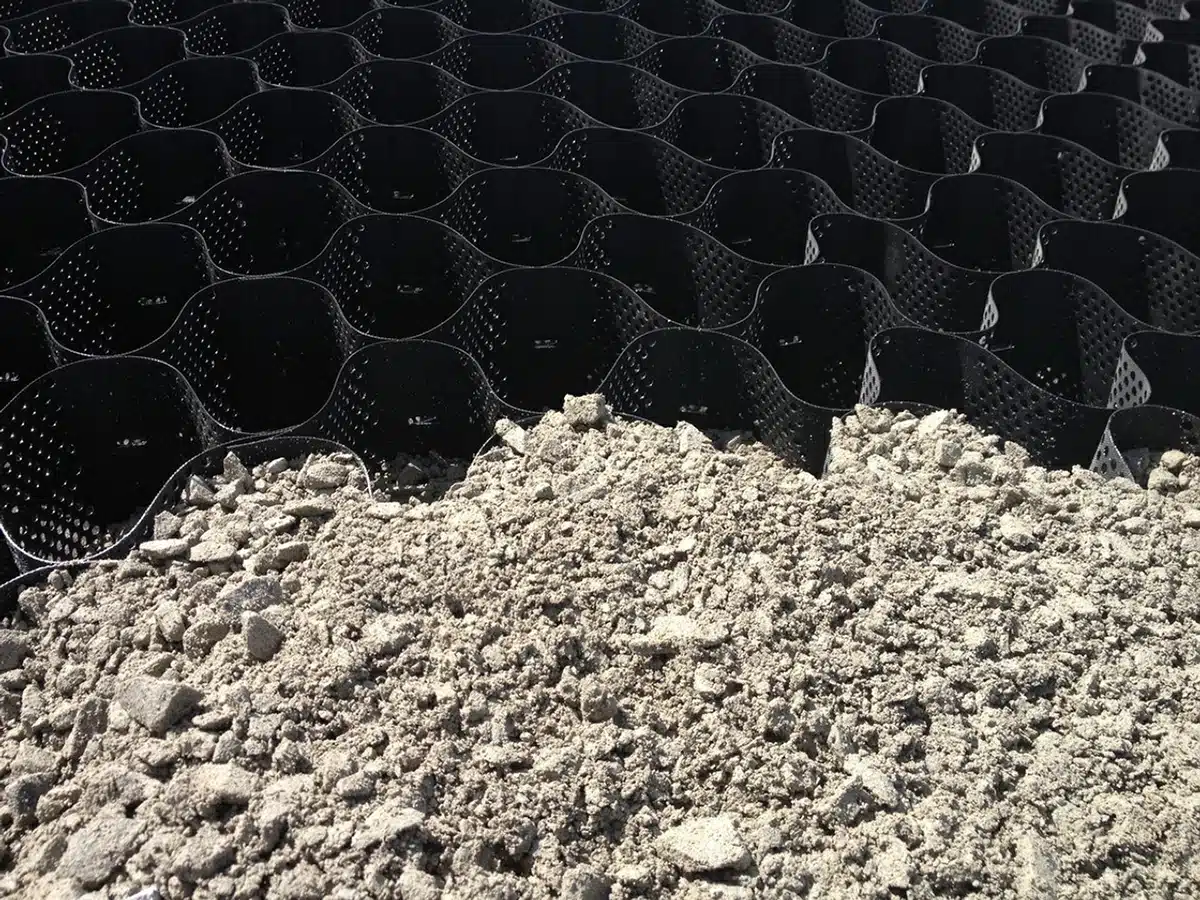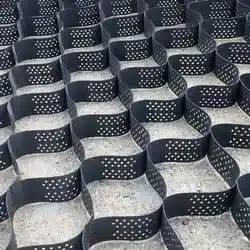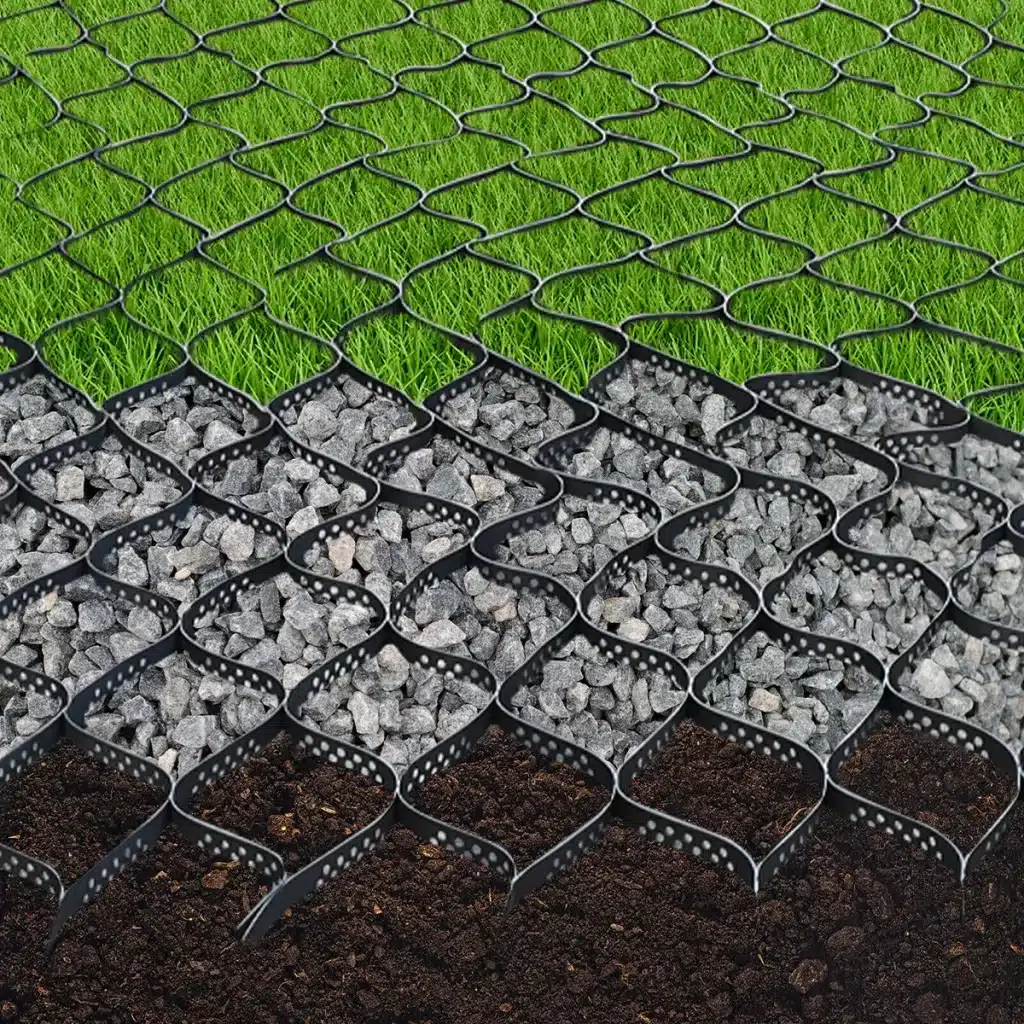+86-159 9860 6917
info@geofantex.com
geofantex@gmail.com
+86-400-8266163-44899
In the realm of construction and environmental engineering, a quiet revolution is underway, marked by the adoption of geocells. These innovative structures are transforming landscapes, stabilizing terrains, and supporting sustainable development across the globe. But who’s adopting geocells, and why are they becoming so popular? This article delves into the material makeup of geocells, their diverse applications, their primary functions, and how they differ from similar solutions like geogrids. Join us as we explore the world beneath our feet and uncover the potential of geocells.

What Material are Geocells?
Geocells are innovative, three-dimensional synthetic materials, mostly made of polymer strips placed in a honeycomb shape, creating durable, lightweight structures from high-density polyethylene (HDPE), polypropylene, or polyester. Their design emphasizes flexibility and strength, allowing them to endure various environmental stresses while providing significant load support. This unique combination of properties and their versatile application make geocells a preferred choice for an array of soil stabilization and reinforcement projects, highlighting their importance in modern construction and environmental conservation efforts.
Where are Geocells Used?
Geocells are versatile, finding their application in a myriad of environments and projects tailored for construction for erosion control, soil stabilization on flat ground and steep slopes, channel protection, and structural reinforcement for load support and earth retention. Their usage spans from reinforcing roadways and railways to managing erosion in waterways and slopes, covering a wide spectrum of civil engineering, military construction, and landscape architecture. Beyond these, geocells play a vital role in agricultural practices, providing soil stabilization and supporting cultivation in challenging terrains. Their adaptability to different soils and climates solidifies them as a global solution for sustainable construction and comprehensive environmental protection efforts.

What is the Purpose of a Geocell?
The primary purpose of a geocell is to improve the load-bearing capacity of soil, reduce erosion, and enhance land stability. By confining materials within their cellular structure, they distribute weight evenly, preventing soil displacement and increasing the strength and stability of the underlying surface. This makes geocells an essential tool in construction, landscaping, and environmental restoration projects, offering a sustainable alternative to traditional building materials and methods.
What is the Difference Between Geogrid and Geocell?
While both geogrids and geocells are pivotal in soil stabilization and reinforcement, they present notable differences in design and functionality. The geocell is characterized as a deep, three-dimensional mesh structure, effectively confining and stabilizing materials to offer robust vertical and lateral support. This contrasts with the geogrid, which is typically two-dimensional, resembling a flat, net-like structure that lends tensile strength to stabilize soil. Due to their comprehensive structure, geocells are generally considered more versatile, capable of holding a variety of fill materials, providing erosion control, and supporting load distribution on a broader scale, thereby offering a multifaceted approach to ground stabilization and reinforcement challenges.
The adoption of geocells across various industries marks a significant shift towards innovative, sustainable construction and environmental protection methods. From their robust material composition to their broad range of applications, geocells offer a versatile and effective solution for soil stabilization, erosion control, and land reinforcement. As more sectors recognize the benefits of geocells, their use is set to expand, further solidifying their role in modern engineering and construction projects. Whether for roads, railways, or restoration, geocells are paving the way for a more stable and sustainable future.



Get Free Sample
We’ll respond as soon as possible(within 12 hours)






















